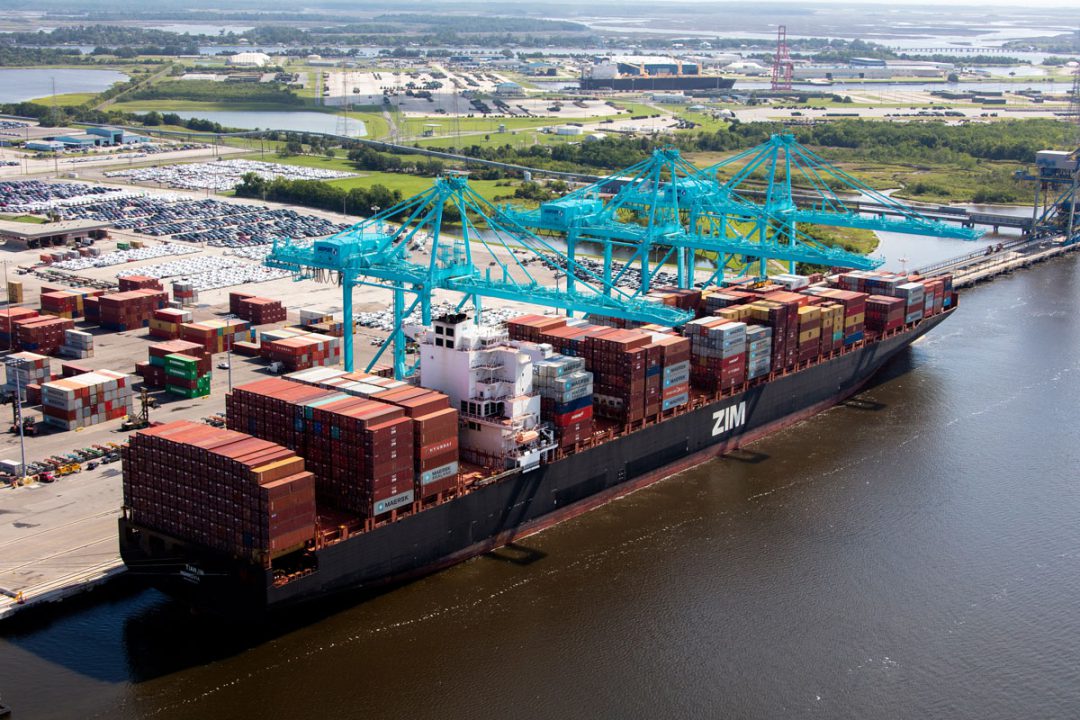Government fully funds its portion of deepening through Blount Island with largest single investment of federal funding in JAXPORT history.
The federal government allocated $93 million for the next phase of deepening the Jacksonville shipping channel to 47 feet from its current depth of 40 feet. A milestone for the project and a major victory for JAXPORT, the federal government has now fully funded the government’s portion of deepening through JAXPORT’s Blount Island Marine Terminal.
Of the total $93 million investment, $57,543,000 is included in the U.S. Army Corps of Engineers’ Fiscal Year 20 Work Plan, and an additional $35,457,000 is allocated in the A Budget for America’s Future – President’s Budget FY 2021.
“This is a significant win for Jacksonville and as I have said before, the continued support from our state and federal partners demonstrates the strength of JAXPORT’s future,” said Jacksonville Mayor Lenny Curry. “We are grateful for the continued growth under the leadership of CEO Eric Green. JAXPORT is Florida’s number one container port and as we continue to expand its capabilities, we know we will see even more jobs and economic growth.”
“This is the first time JAXPORT has ever received funding in the President’s budget, which speaks volumes about the significance of this project to the Southeast U.S. and the nation,” said JAXPORT CEO Eric Green. “We are extremely grateful to our federal, state and local partners, as well as the dedication and leadership of the JAXPORT Board, for their steadfast support of our growth and the 138,000 jobs Jacksonville’s seaport generates in Florida.”
Upon completion of the deepening project, the SSA Jacksonville Container Terminal at Blount Island will feature a vessel turning basin and have the ability to simultaneously accommodate two post-Panamax vessels. In November, the U.S Department of Transportation awarded JAXPORT a $20 million grant to enable the facility to accommodate more containers on an expanded footprint.
To date, the federal government, the state of Florida, JAXPORT, and port tenant SSA Jacksonville have contributed or pledged a combined total of more than $394 million dollars toward the cost of the $484 million deepening project, the first project of its kind to include funding from a private business.
Harbor deepening is divided into four segments, contracts A-D, which make up the full length of the 13-mile federally authorized project.
The current funding model covers the project’s first 11 miles through Blount Island (contracts A, B and C). Contractors for the U.S. Army Corps of Engineers are scheduled to complete the first 5.5 miles in spring 2020, marking the halfway point for this portion of the project.
Harbor deepening began in February 2018 and is anticipated to be complete in 2023, two years ahead of its original schedule, based on continued funding from all partners.
The 47-foot depth is required to accommodate more cargo aboard the larger ships calling on JAXPORT from destinations throughout Asia and other world markets through both the Panama and Suez canals. Asian container trade is an important part of JAXPORT’s container cargo business, up 55 percent in the last five years.
Supporters of this funding include President Donald Trump; Assistant Secretary of the Army for Civil Works R.D. James; the Florida Department of Transportation (FDOT); Florida Governor Ron DeSantis; Congressmen John Rutherford, Al Lawson, Michael Waltz, Ted Yoho, Daniel Webster, Neal Dunn, Brian Mast; Senators Rick Scott and Marco Rubio; and Jacksonville Mayor Lenny Curry.
JAXPORT is Florida’s largest container port and the nation’s second-busiest vehicle handling port. An economic impact study finds that the Jacksonville Harbor Deepening Project will create or protect 15,000 jobs and return $24 for every $1 invested in the project.

























